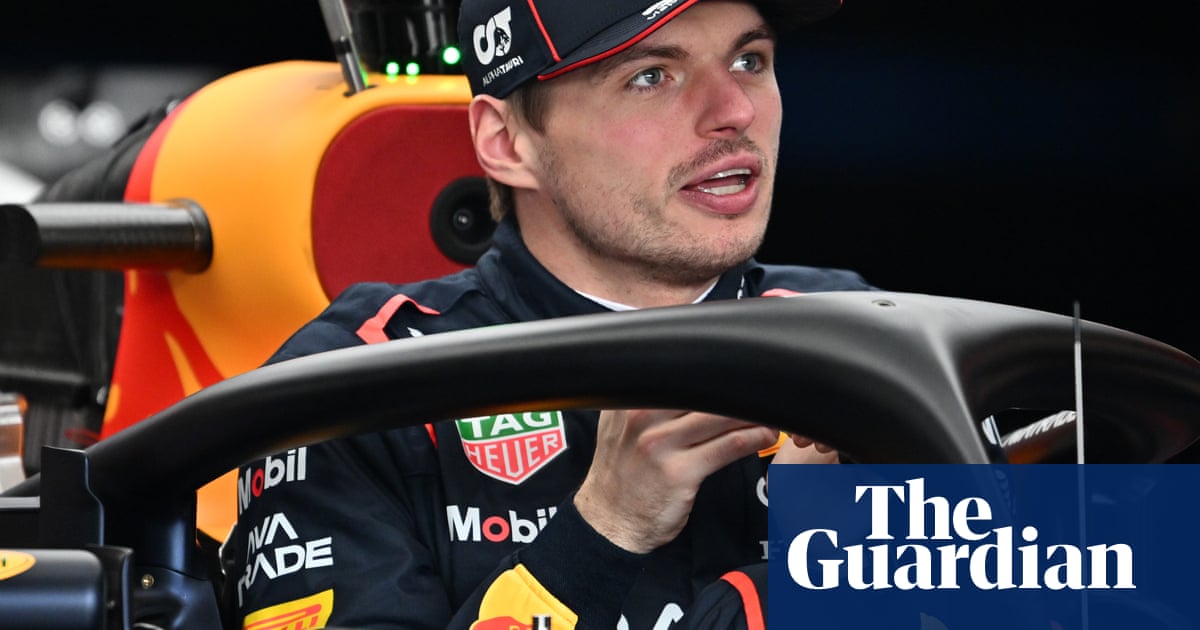Max Verstappen rose to fame as something of a villain. As the Formula 1 circuit hops back across the Atlantic for the weekend’s Canadian Grand Prix, he appears on the verge of reclaiming the role.
Like Tim Robbins’ strong-armed but hot-headed Nuke LaLoosh character in the baseball film Bull Durham, the brash Dutch phenomenon announced his presence with authority – undeniable skills and unfortunate lapses in judgment or focus. He became well acquainted with the walls of many a race circuit and earned a gentle “warning” from F1 management.
His ascendance to theworld championship title in 2021 at Abu Dhabiwas also controversial – some might instead say farcical, as if the rule book was tossed out of one of Abu Dhabi’s growing array of 300m-tall buildings. Race officials had no truly coherent reason for allowing some cars to “unlap” themselves while following a safety car, allowing Verstappen to start the final lap right on Lewis Hamilton’s tail, with a fresher set of tyres and everyone knows what happened next.
Since then, though, Verstappen’s narrative has changed. He is no longer the impudent youngster with one tarnished championship. He’s a four-time champion, following up his 2021 breakthrough by winning the 2022 and 2023 titles with dominance not seen since Michael Schumacher’s heyday in the 2000s.
But while he held off Lando Norris to winhis fourth straight title in 2024, for the past 12 months the wins haven’t been coming quite as easily. This year, he stands in third place and may be losing contact with the McLaren duo of Norris and Oscar Piastri.
As his results have reverted to his late-2010s form,so has his temper. After taking 10th place and taking out his frustration on the luckless George Russell in Spain, he is on the precipice of a suspension, not a fifth title.
After the incident in Spain, Italian taxi drivers fought back against the accusation thatVerstappen drives like they do. Anyone who has spent time in Italian taxis would agree that being compared to a four-time F1 champion would, under most circumstances, be considered a compliment. Not now.
So Verstappen the Villain is well and truly back. Russell expressed surprise in Montreal on Thursday that the Dutchman had even offered an apology of sorts but suggested Verstappen would be unlikely to change his aggressive approach even if he did accumulate the 12 points that would result in a ban.
The question for F1, now and for the foreseeable future: is this a good thing? Does the sport do better when it has someone to root against as well as many drivers to root for?
Other sports benefit from having foils for the fan favorites. If a supporter’s favorite team loses, there’s always a chance the New York Yankees or Manchester United might lose as well, and there’s comfort in schadenfreude. Consider Nascar, where fans either loved or hated Dale Earnhardt’s “Intimidator” style and often distrusted Jeff Gordon because he was a smooth-talking Californian, not a rough-edged man with a Southern drawl.
Nascar also has long benefited from its unpredictability. In the modern era, champion drivers typically win no more than 25% of the races in a given season. In F1, Verstappen cruised to the 2023 title by winning 19 of 22 races.
Sign up toThe Recap
The best of our sports journalism from the past seven days and a heads-up on the weekend’s action
after newsletter promotion
But F1 has been doing just fine during the era of Verstappen dominance, especially in North America. The 25 May F1 race in Monaco drew the third-highest TV rating in US history, ESPN claims, with an average of 2.3 million viewers and a peak of 2.6 million. Imagine what could happen this Sunday, with F1 on a less glitzy but less predictable circuit than the traditional but tedious Monaco streets. Last year, the Canadian GP averaged a robust 1.76 million viewers in the US, ESPN reports. In Canada itself, the ratings were reported at a record 1.4 million, with 3.5 million viewers on all platforms – nearly 9% of the country’s population.
Credit the Netflix documentary series Formula 1: Drive to Survive with showing that the people who drive and service these cars are human – or superhuman, in the case of the fiery crash from which Romain Grosjean emerged like a phoenix or a Targaryen and stunned doctor/YouTuber Dr Mike and countless others. Drivers have been shown to have delightfully quirky personalities, such that the top story on the 6.1million-strong F1 Reddit sub on Thursday was a debate over the veracity of a photo that may or may not show that longtime title contender Valtteri Bottas has broken a Colorado restaurant’s record by consuming 51 tacos in one hour. (A cursory check of Yelp finds a review from August 2019 confirming that the 51-taco record dates back at least that far, so at best, Bottas tied the record.)
But the biggest development this year is that the title chase is far from a foregone conclusion.
The season is still young, and Verstappen’s powerhouseRed Bullteam may respond well to F1’s in-season rules adjustments. But he’s nearly 50 points off the pace set by Australian Piastri, with Piastri’s fellow McLaren prodigy Norris a close second.
Verstappen the Villain surely is a boon for F1 fandom. But Verstappen the Vulnerable may have an even greater impact.
